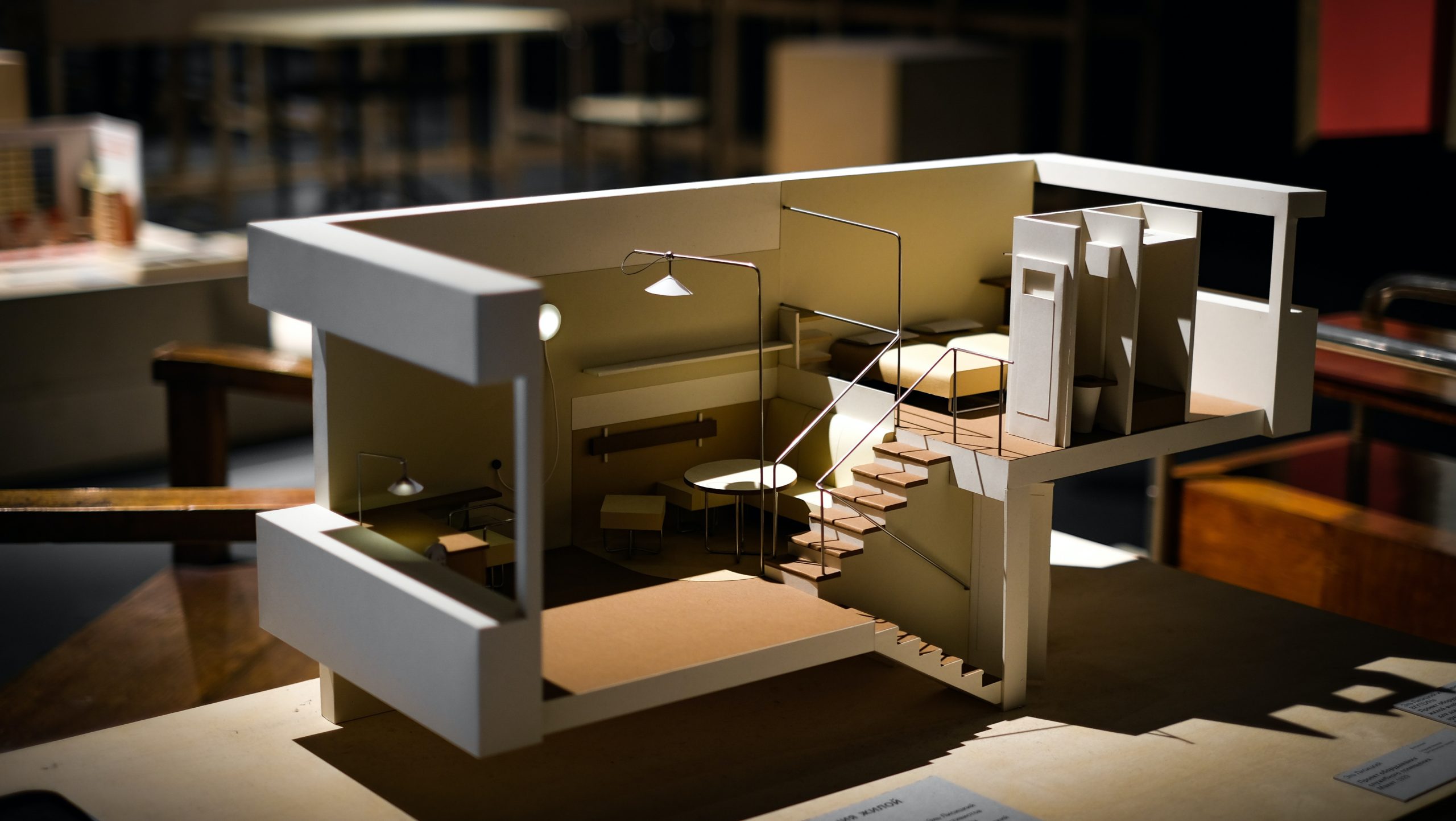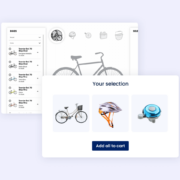As digital commerce evolves, so does the technology used to deliver better customer experiences and the composable product configurator market is advancing in rapid speed to meet market needs. Today’s environment requires scalable and intuitive product configurators that both sellers and buyers can use without being stuck in outdated configure, price, and quote (CPQ) applications that rely too heavily on manually assisted sales channels. In a recent Market Guide from Gartner, analysts outlined the key benefits and capabilities a composable product configurator must provide and who is offering the best configuration experiences in 2023.
Product configurators allow businesses to deploy these experiences across any sales channel to enable the quoting and ordering of complex products and services seamlessly – wherever buyers need them. Sellers can use them to help buyers, but they are increasingly becoming more popular for B2B buyers who prefer self-serve environments to conduct purchases.
The benefits of product configurators included improvement in win rate, increased average order value (deal size), lower costs associated with drafting design files, higher customer satisfaction, and reduced number of samples required in retail settings. What makes composable product configurators different than older applications is they can integrate via API or embeddable UI and are designed to work alongside existing tech stacks.
At their core, a configurator should be powered by a “rule engine” that visualizes all available options for a product and ensure only compatible components are presented, otherwise referred to as a “rule engine.” Only the most sophisticated product configurator software can present multiple products at once within a singular visual experience and scale it across product portfolios This is a critical need for B2B industrial manufacturers and others with complex products that require application-based configuration.
Examples of Composable Product Configurators
The best product configurators delight customers with an intuitive, interactive experience that gives them a sense of control over the outcome of the product or service they are purchasing. What that experience looks like differs depending on the product, industry, and end-user like the following examples:
Straumann: Focuses on Compatibility in Complex Products
Straumann, a dental manufacturer, offers a product configurator for implants that supports both two different buyer personas: dentists and nurses. Both buyers can use the configurator to customize implants based on necessary criteria and patient information without needing to have lengthy conversations with sales reps.
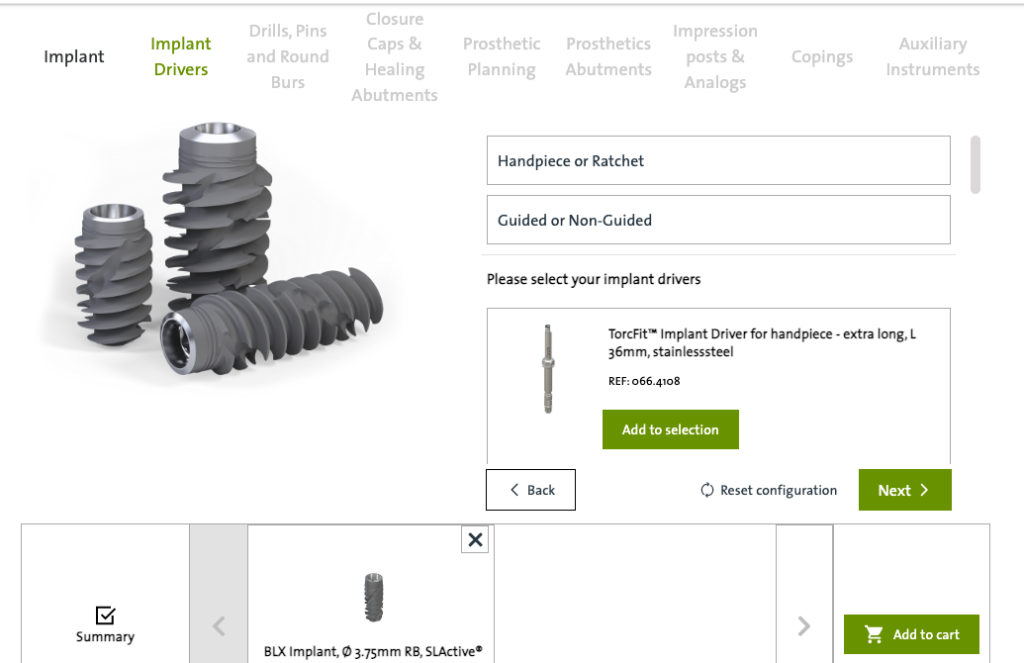
B/S/H: Makes Customizing a Kitchen Inspiring
Gartner highlighted an emerging trend in the product configuration market as “room layout configuration,” which consists of two different types: a system configuration that enforces the special integrity of the design, and a digital twin of a room that uses 3D modeling.
B/S/H, the global multi-brand home appliance manufacturer, takes the “room layout configuration” to an upgraded level with integrated guided selling assistants for every product featured in their Kitchen Planner. Customers receive expert product advice to help them pick the right appliance for their needs while seeing all available products in one single configurator experience.
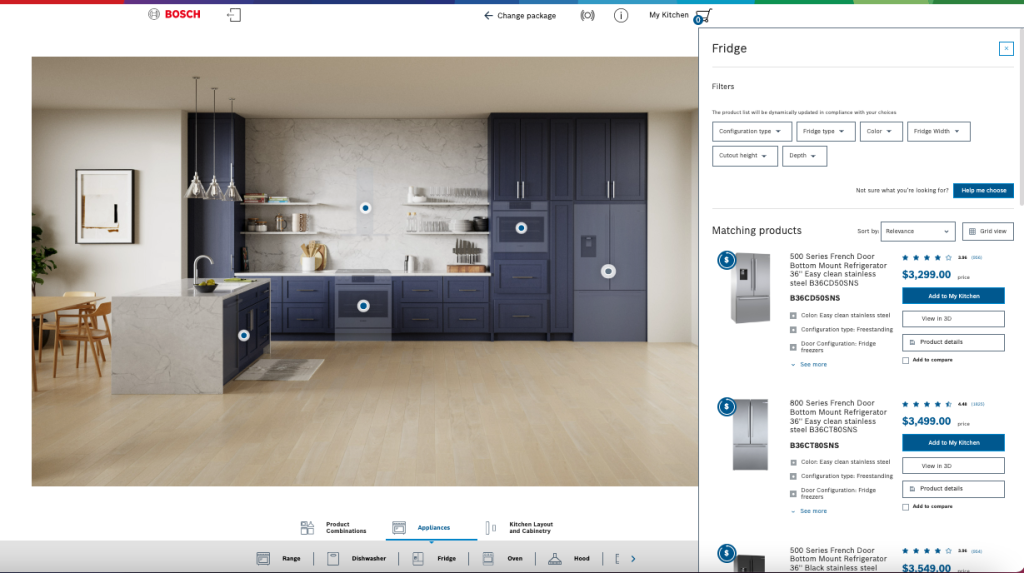
From a consumer standpoint, product configurators are most often associated with customizing a product with different colors, patterns, and other customizations that reflect a product’s personality or style. Brands benefit from increasing the average order value and having customers feel in control of the final product which builds brand loyalty.
KitchenAid: Improve Product Awareness
KitchenAid launched a Customizer configurator for their iconic Stand Mixer in 2019 as a way to build awareness of all the ways the mixer could be used outside of the traditional baking use. Consumers pick the color of the mixer, what additional bowls they’d like, attachments for pasta making and meat grinding, and other customizable options. The Customizer helps KitchenAid increase average order, improve product visibility, and build a stronger relationship with their consumers as the consumer sees how much more value they can get out of the Stand Mixer.
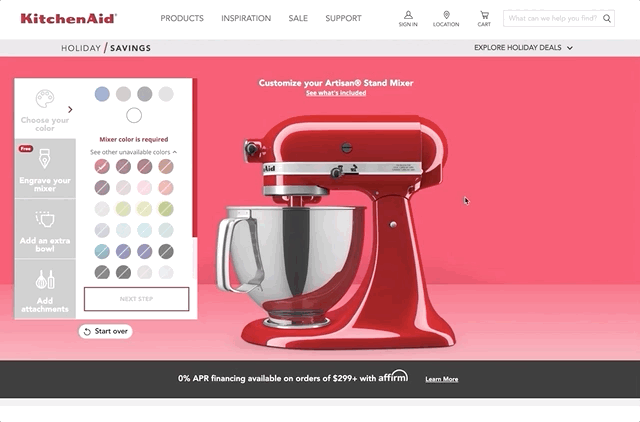
How to Determine the Best Composable Product Configurator Solution
According to Gartner’s Market Guide, businesses have two options when evaluating product configurator solutions: stand-alone solutions solely focused on configuration or a multiple-discovery experience solution that offers configuration in addition to other digital sales experiences like Zoovu. Both offer 2D and 3D configuration, powerful rule engines, and scalability. Amid tightening budgets and needing to do more with less, is using a stand-alone solution the right investment in today’s market?
Businesses are coming to understand that to be successful in today’s always-changing environment, tech stacks need to be flexible, able to integrate new technologies, and consist of numerous solutions driving a unified experience – in other words, they are taking different solutions and composing a tech stack that works for their business needs. Product configurator solutions are often siloed into only offering one thing: the development of product configurators that integrate into existing tech stacks and then deploy across sales channels.
The benefits are likely to be similar across the board, higher AOV, better customer experience, and more opportunity to innovate customizable products, but single-solution vendors limit businesses from doing more with product search and discovery experiences — which is what a product configurator is at the end of the day. If a product requires technical assistance to understand specifications, a single solution vendor cannot support the integration of an AI Guided Selling Assistants.
When it comes to determining the best composable product configurator for a business, consider the following:
- 2D, 3D, or AR: What visual components are needed to make a product configurator work best for your business?
- Time to Market: Does the vendor offer an out-of-the-box configurator that can be customized or is everything built from scratch?
- Scalability across Channels, Languages, and Product Portfolio: Can the product configurator be easily embedded into different channels once built? Translated for existing and emerging markets? Is adding new or updated products possible without impacting the usability of the configurator?
- Access to Integrated Guided Selling: Can the product configurator have guided selling integrated into the experience to offer expert advice and product recommendations in one singular solution?
As buyer and consumer needs evolve, businesses will continue to invest in solutions to make their products and services stand out, product configurators when executed properly help businesses stand out and improve their bottom line.
